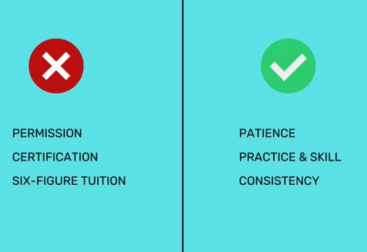John Danaher is a prominent figure in the Brazilian Jiu-Jitsu (BJJ) community, known for his exceptional coaching and contributions to the sport. His coaching has produced some of the all-time greats in the world of combat sports, most notably UFC GOAT Georges Saint-Pierre and BJJ GOAT Gordan Ryan. Danaher’s students have been affectionately labelled the Danaher Death Squad because of their dominance in their respective sports.
Danaher’s approach to BJJ is heavily influenced by his background in philosophy and his analytical mindset. He is known for his focus on the technical aspects of the sport and his ability to break down complex movements into easy-to-understand components. BJJ is known for its emphasis on technique over strength, making it the perfect martial art for people of all shapes and sizes. In his appearance on the Joe Rogan Experience podcast, Danaher explained the four steps of BJJ and the reasoning behind them.
Step 1: Take your opponent to the ground
The first step in BJJ is to take your opponent to the ground. Danaher refers to this as “removing the explosive dynamic movement from your opponent.” Your opponent is at his most dangerous when he can generate explosive power from his legs. Explosive movements are less effective on the ground, making it a far safer position to be in than standing up.
The ground also offers you more control than standing up, you can use the floor to your advantage by pressing your opponent against it or using it as leverage to get a better position.
Step 2: Pass the legs
Once you have taken your opponent to the ground, the next step is to secure a dominant position. The legs are still the most powerful and dangerous part of your opponent so you have to get past them and into a position of control.
Step 3: work through the hierarchy of pins
There are many different positions in BJJ, but the idea is to work your way up a hierarchy of positions, from side control to mount to rear mount, depending on your game plan. Although BJJ doesn’t involve striking, Danaher explains that the value of a position depends on how easy it makes it to deliver damaging strikes to your opponent. He says “the pins are graded in value according to your ability to strike with effect from the ground”. For example, the mount is a higher-level pin than the side control because you are controlling your opponent as well as giving yourself more opportunities to deliver powerful strikes.
Step 4: Go for a submission
Once you have a dominant position, the final step is to go for a submission. This involves applying a joint lock or choke hold to your opponent in order to force them to tap out.
So why is BJJ structured in this way? According to Danaher, the four steps of BJJ are designed to minimize risk and maximize control. By taking your opponent to the ground, you eliminate the risk of getting hit with a powerful strike or being taken down yourself. By securing a dominant position, you gain control over your opponent and can set up submissions. And by defending yourself, you ensure that you stay in control and avoid getting submitted.
Overall, the four steps of BJJ provide a clear framework for how to approach a fight. By following these steps, you can minimize risk and maximize your chances of coming out on top. Whether you’re a seasoned BJJ practitioner or just starting out, these principles can help you improve your technique and become a more effective fighter.





